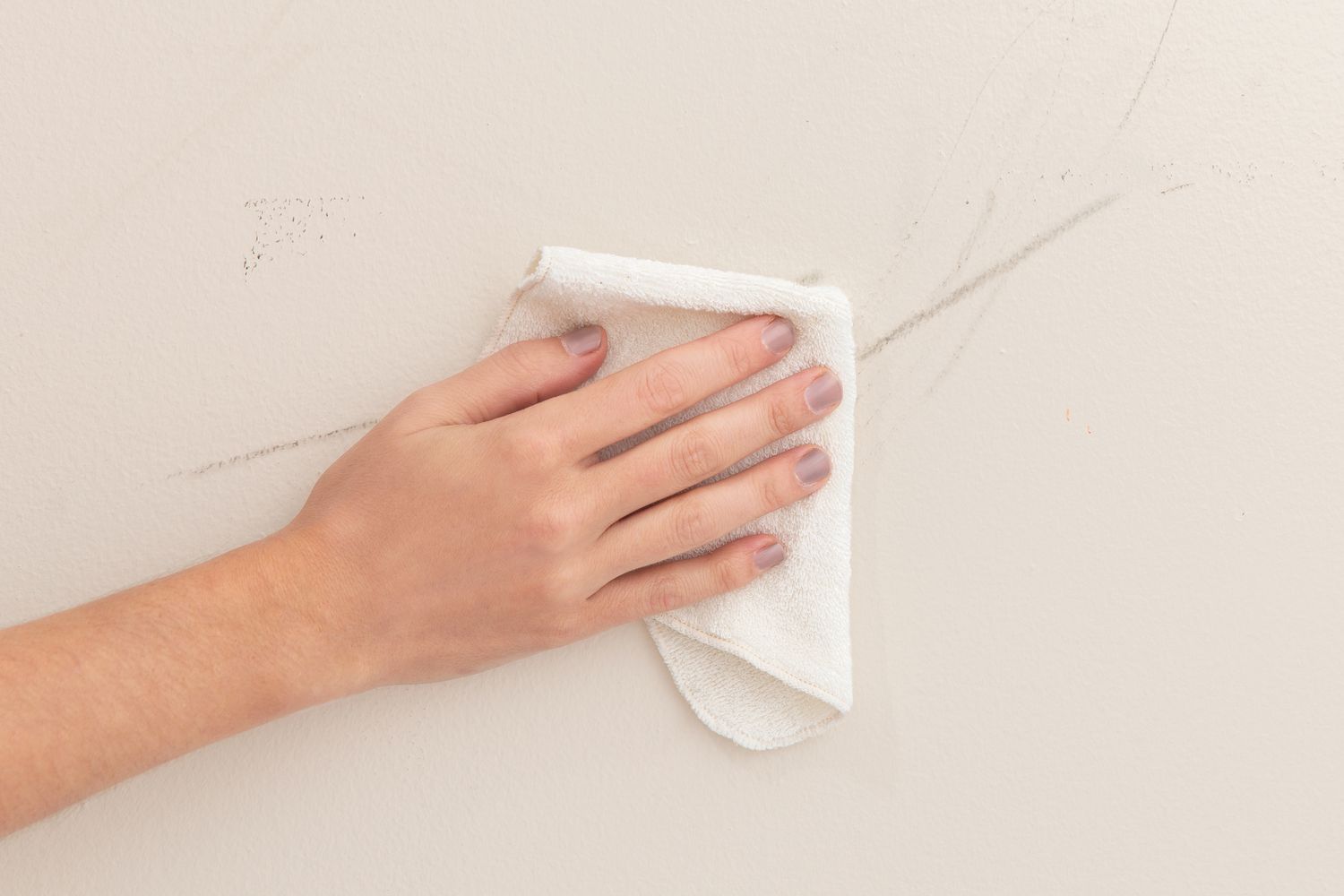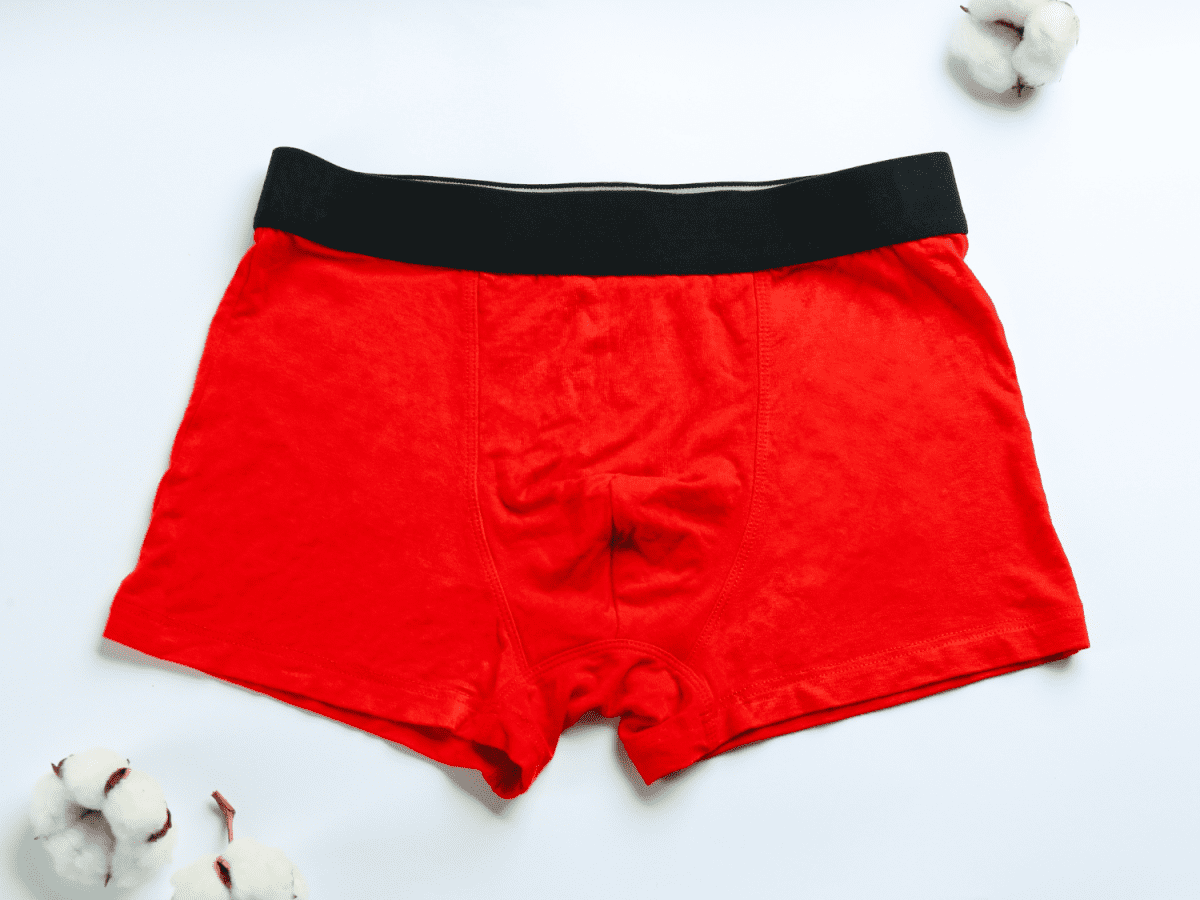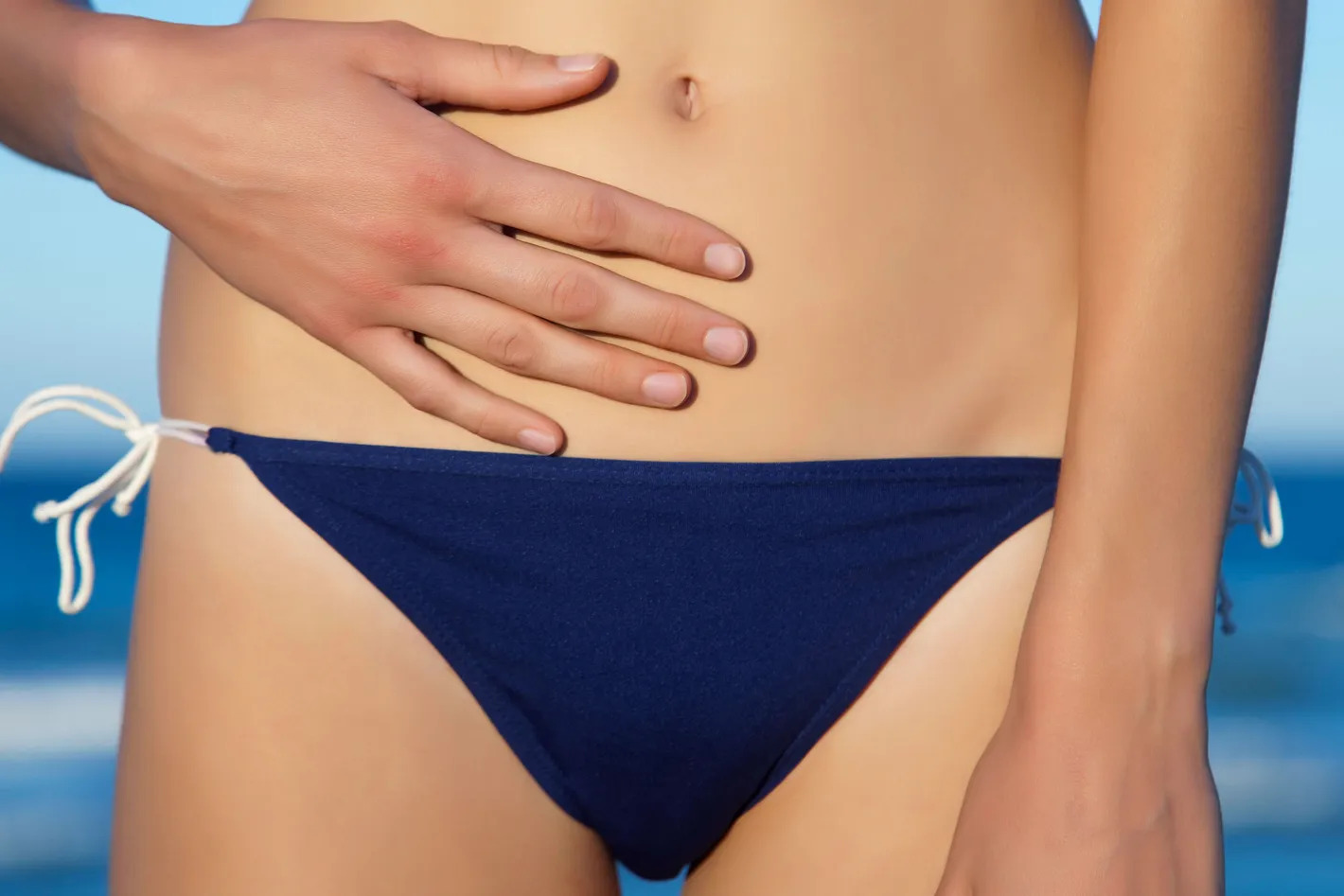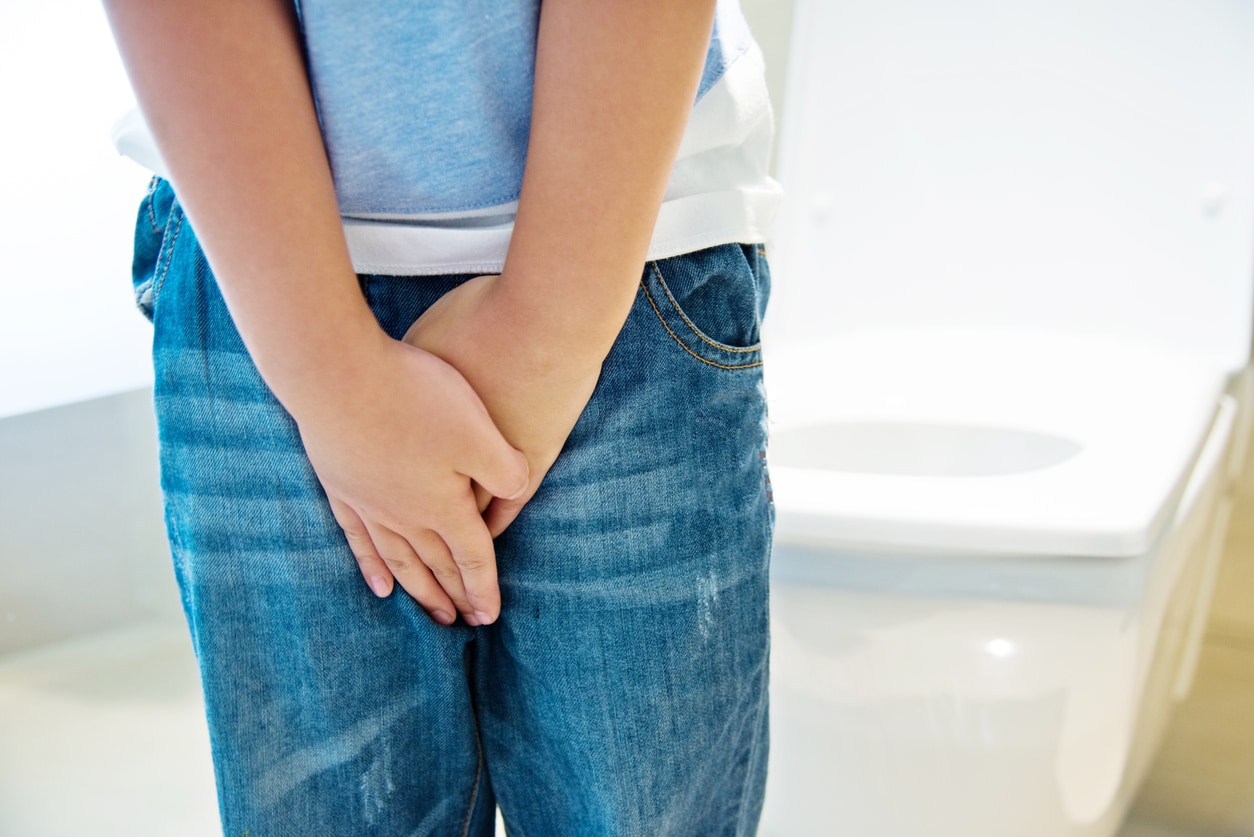

FAQs
Why Am I Getting Skid Marks
Published: July 31, 2023
Got general questions about why you're getting skid marks? Find the answers and solutions to this common issue in our informative guide.
(Many of the links in this article redirect to a specific reviewed product. Your purchase of these products through affiliate links helps to generate commission for Under-tec.com, at no extra cost. Learn more)
Table of Contents
Introduction
Skid marks can be an embarrassing and frustrating issue that many individuals face. Whether it’s a recurring problem or an occasional occurrence, the presence of skid marks can leave you feeling self-conscious and seeking answers. If you’ve ever wondered, “Why am I getting skid marks?” you’re not alone.
Skid marks, also known as streaks or stains in your underwear, are typically caused by small amounts of fecal matter that are left behind after using the toilet. While it’s a common issue, particularly for adults, it’s one that many people are reluctant to discuss openly. However, understanding the reasons behind skid marks can help you address the problem more effectively and take steps to prevent them.
In this article, we’ll delve into the various factors that contribute to skid marks. From poor wiping technique to digestive health and underlying medical conditions, there are several potential causes to consider. By gaining insight into these causes, you can begin to develop strategies for preventing skid marks.
So, if you’ve ever found yourself questioning why you’re experiencing skid marks, keep reading. We’ll explore different aspects of this issue and provide helpful tips and solutions that can significantly improve your situation.
Understanding Skid Marks
Skid marks, also known as fecal streaks or stains in underwear, are a common problem that many individuals experience. They occur when small amounts of fecal matter are left behind after using the toilet, and can be visible on underwear. While skid marks can be embarrassing, it’s important to remember that they are a normal bodily function and happen to everyone at some point.
Skid marks are typically caused by inadequate cleaning of the anal area after bowel movements. This can happen due to various reasons, including poor wiping technique, anal leakage, or issues related to diet and digestive health.
Poor wiping technique is one of the primary causes of skid marks. Inadequate wiping or using dry toilet paper alone can lead to incomplete removal of fecal matter. It’s important to ensure thorough cleaning of the anal area after each bowel movement, using moist wipes or bidets for better hygiene.
Another potential cause of skid marks is anal leakage, which occurs when small amounts of fecal matter leak out of the anus unintentionally. This can be caused by weak anal sphincter muscles or conditions such as diarrhea or constipation. Anal leakage can be more common in individuals with irritable bowel syndrome (IBS) or other gastrointestinal disorders.
Diet and digestive health also play a role in the occurrence of skid marks. Certain foods, such as those high in fat or fiber, can affect the consistency of stool and make it harder to clean the anal area thoroughly. Additionally, digestive issues like chronic constipation or diarrhea can contribute to skid marks.
It’s important to remember that while skid marks are often a result of hygiene-related factors, they can also be a symptom of underlying medical conditions. In some cases, persistent or frequent skid marks may indicate an underlying gastrointestinal disorder, such as inflammatory bowel disease or an infection.
Understanding the causes of skid marks is the first step in addressing the issue. By identifying the potential factors contributing to skid marks, you can take appropriate measures to prevent them and maintain better anal hygiene.
Causes of Skid Marks
Skid marks, those pesky streaks or stains in your underwear, can be attributed to various causes. It’s important to pinpoint the underlying factors contributing to this issue in order to effectively address and prevent skid marks. Let’s take a closer look at some common causes:
Poor Wiping Technique: Inadequate cleaning of the anal area after a bowel movement is a major culprit behind skid marks. Using dry toilet paper alone or not wiping thoroughly can leave behind traces of fecal matter, leading to stains on your underwear. To improve your wiping technique, consider using moist wipes or bidets for better hygiene.
Anal Leakage: Anal leakage refers to the unintentional leakage of small amounts of fecal matter from the anus. This can be caused by weak anal sphincter muscles or conditions such as diarrhea or constipation. Individuals with irritable bowel syndrome (IBS) or other gastrointestinal disorders may experience a higher likelihood of anal leakage, and subsequently, skid marks.
Diet and Digestive Health: The foods you consume can affect the consistency of your stool and contribute to skid marks. Certain foods, particularly high-fat or high-fiber ones, can make it more challenging to clean the anal area thoroughly. Additionally, individuals with chronic digestive issues like constipation or diarrhea may be more prone to skid marks.
Underlying Medical Conditions: While skid marks are often related to hygiene or diet factors, they can also be a symptom of underlying medical conditions. In some cases, persistent or frequent skid marks may indicate an underlying gastrointestinal disorder, such as inflammatory bowel disease or an infection. If you’re experiencing ongoing issues with skid marks, it’s advisable to consult a healthcare professional for a proper evaluation and diagnosis.
By understanding the causes of skid marks, you can take proactive measures to address and prevent them. Whether it’s improving your wiping technique, managing digestive health through dietary adjustments, or seeking medical attention for underlying conditions, there are steps you can take to minimize the occurrence of skid marks and maintain better overall hygiene.
Poor Wiping Technique
Poor wiping technique is a common cause of skid marks. Inadequate cleaning of the anal area after a bowel movement can leave behind traces of fecal matter, leading to stains on your underwear. To avoid this issue, it’s crucial to follow proper wiping techniques and ensure thorough cleanliness. Here are some factors to consider:
Use Moist Wipes or Bidets: Dry toilet paper alone may not be sufficient to properly clean the anal area. Using moist wipes or a bidet can provide better hygiene by effectively removing fecal matter. These options are especially recommended for individuals who struggle with skid marks due to ineffective wiping.
Wipe From Front to Back: When wiping after a bowel movement, it’s important to wipe from front to back, especially for women. This helps prevent the spread of bacteria from the anal area to the vaginal area, reducing the risk of infections. By following this technique, you can maintain better hygiene and decrease the likelihood of skid marks.
Use Gentle, Patting Motions: Instead of harsh or aggressive wiping, use gentle patting motions to clean the anal area. This helps avoid irritation and potential damage to the delicate skin. Gentle patting also allows for more efficient removal of fecal matter, reducing the chances of leaving behind skid marks.
Ensure Thorough Cleaning: Take your time when wiping to ensure thorough cleaning of the anal area. Check the toilet paper after each wipe to make sure it’s clean before moving on. Repeat the wiping process as needed until the area is completely clean. Remember, it’s better to take a little longer to ensure cleanliness and prevent skid marks.
Consider Using a Bidet Attachment: If you frequently struggle with skid marks or want to improve your overall hygiene, consider installing a bidet attachment to your toilet. A bidet uses water to effectively clean the anal area, providing a more thorough and hygienic alternative to traditional wiping methods.
By adopting proper wiping techniques, you can significantly reduce the occurrence of skid marks. Ensuring thorough cleaning, using moist wipes or bidets, and practicing gentle patting motions are all key to maintaining better anal hygiene. Don’t be afraid to experiment with different methods to find what works best for you and remember to prioritize cleanliness in order to prevent skid marks.
Anal Leakage
Anal leakage, also known as fecal incontinence, is a common condition that can contribute to the occurrence of skid marks. It refers to the unintentional leakage of small amounts of fecal matter from the anus. Anal leakage can be caused by a variety of factors and can significantly impact a person’s daily life and hygiene. Here are some key points to consider:
Causes of Anal Leakage: Anal leakage can be caused by weakened anal sphincter muscles, which are responsible for controlling the release of stool. Conditions such as childbirth, aging, and certain medical procedures can weaken these muscles, leading to a loss of control over bowel movements. Additionally, chronic diarrhea or constipation can also contribute to anal leakage.
Impact on Skid Marks: Anal leakage can contribute to the occurrence of skid marks. When small amounts of fecal matter leak out of the anus, it can result in stains on underwear. The leakage may be more noticeable during physical activities, such as exercising or laughing, or it may occur without any apparent triggers.
Managing Anal Leakage: If you’re experiencing anal leakage, there are several strategies that can help manage and reduce its impact. These include:
- Exercises: Performing pelvic floor exercises, such as Kegels, can help strengthen the muscles around the anus and improve control over bowel movements.
- Dietary Changes: Adjusting your diet to include more fiber and drinking plenty of water can help regulate bowel movements and minimize the risk of sudden leakage episodes.
- Medications: In some cases, medications may be prescribed to help manage anal leakage. These may include anti-diarrheal medications or stool bulking agents.
- Wearing Absorbent Products: Depending on the severity of the anal leakage, wearing absorbent pads or underwear liners can help prevent skid marks and provide added protection.
- Seeking Medical Advice: If anal leakage persists or significantly impacts your quality of life, it’s essential to consult a healthcare professional. They can evaluate your condition, identify any underlying causes, and recommend appropriate treatment options.
It’s crucial to remember that anal leakage is a common issue and is often treatable or manageable with the right interventions. Seeking support from healthcare professionals and implementing strategies to improve muscle control and bowel function can significantly reduce the occurrence of skid marks caused by anal leakage.
Diet and Digestive Health
Your diet and digestive health can play a significant role in the occurrence of skid marks. The foods you eat and how your digestive system processes them can impact the consistency of your stool and the ease of cleaning the anal area. Here are some important points to consider:
High-Fat Foods: Consuming a diet high in fatty foods can contribute to skid marks. High-fat foods can lead to softer and more difficult-to-clean stool, increasing the chances of leaving behind traces of fecal matter. Reduce your intake of fried foods, fatty meats, and processed snacks to minimize this risk.
High-Fiber Foods: While fiber is essential for digestive health, excessive consumption of high-fiber foods can also contribute to skid marks. Foods like bran, whole grains, and certain fruits and vegetables can lead to bulkier and harder-to-clean stool. It’s important to strike a balance and ensure you’re consuming an adequate amount of fiber without overdoing it.
Hydration: Proper hydration is crucial for maintaining healthy digestion. Drinking an adequate amount of water helps soften the stool, making it easier to pass and clean the anal area thoroughly. Aim for at least 8 cups of water per day and adjust your intake based on your activity level and environmental conditions.
Stool Consistency: Pay attention to the consistency of your stool, as it can provide insights into your digestive health. Ideally, your stool should be well-formed and easy to pass. If you consistently experience loose or watery stools, it may be a sign of an underlying digestive issue that can contribute to skid marks. Consider making dietary adjustments or seeking medical advice to address this concern.
Probiotics: Probiotics are beneficial bacteria that can support the health of your digestive system. They can help regulate bowel movements and promote a healthy balance of gut flora. Adding probiotic-rich foods, such as yogurt or fermented vegetables, to your diet or taking a probiotic supplement can potentially improve your digestive health and reduce the occurrence of skid marks.
It’s important to note that everyone’s dietary needs and digestive systems are unique. What works for one person may not work for another. Pay attention to your body’s response to different foods and make adjustments accordingly. If you find that certain foods consistently contribute to skid marks, consider reducing or eliminating them from your diet to prevent future occurrences.
If you’re unsure about how diet and digestive health may be impacting your skid marks, it’s advisable to consult a healthcare professional or a registered dietitian. They can provide personalized guidance, assess your digestive health, and help you make dietary changes that promote better overall digestion and hygiene.
Underlying Medical Conditions
While skid marks are often attributed to hygiene and dietary factors, it’s important to recognize that they can also be a symptom of underlying medical conditions. If you experience persistent or frequent skid marks, it may be worth considering if an underlying health issue is contributing to the problem. Here are some potential medical conditions that can be associated with skid marks:
Inflammatory Bowel Disease (IBD): Conditions like Crohn’s disease and ulcerative colitis are types of inflammatory bowel disease that can affect the digestive tract. In addition to other symptoms, these conditions can lead to changes in stool consistency and increased risk of anal leakage, which can result in skid marks.
Anal Infections: Infections in the anal area, such as anal fissures or anal abscesses, can cause discomfort and result in difficulty cleaning the area properly. If left untreated, these infections can contribute to skid marks.
Rectal Prolapse: Rectal prolapse occurs when the rectum protrudes from the anus, and it can cause difficulty in controlling bowel movements. This can increase the risk of anal leakage and the occurrence of skid marks.
Gastrointestinal Infections: Certain infections, such as gastroenteritis caused by bacteria or viruses, can lead to diarrhea and changes in bowel movements. These changes, along with increased stool frequency, can contribute to skid marks.
Neurological Disorders: Neurological conditions that affect the nerves controlling the bowel movements, such as multiple sclerosis or spinal cord injuries, can result in fecal incontinence and subsequently, skid marks.
If you suspect that an underlying medical condition may be contributing to your skid marks, it’s important to consult a healthcare professional for a proper evaluation and diagnosis. They can conduct appropriate tests and examinations to identify any potential underlying causes and recommend appropriate treatment options.
Managing skid marks caused by underlying medical conditions often involves addressing the root cause of the issue. Treatment may include medications to manage symptoms, lifestyle modifications, physical therapy, or even surgical interventions in some cases. The specific treatment plan will depend on the diagnosed condition and the individual’s unique circumstances.
Don’t hesitate to seek medical advice if you have concerns about the potential presence of an underlying medical condition contributing to your skid marks. Early diagnosis and proper treatment can greatly improve your overall health and reduce the frequency and impact of skid marks.
Tips for Preventing Skid Marks
If you’re looking to prevent skid marks and maintain better anal hygiene, there are several tips and strategies you can incorporate into your daily routine. By following these practices, you can minimize the occurrence of skid marks and improve your overall cleanliness. Here are some helpful tips:
1. Improve Your Wiping Technique: Ensure you’re wiping thoroughly and using gentle, patting motions. Consider using moist wipes or a bidet for better cleanliness.
2. Stay Hydrated: Drink plenty of water to promote proper hydration and maintain healthy bowel movements. Well-hydrated stools are easier to pass and clean.
3. Eat a Balanced Diet: Consume a balanced diet that includes an adequate amount of fiber. Aim for a variety of fruits, vegetables, whole grains, and lean proteins to support healthy digestion.
4. Pay Attention to Stool Consistency: Monitor the consistency of your stool. If it’s consistently loose or watery, consider making dietary adjustments or seeking medical advice to address any underlying issues.
5. Practice Good Digestive Health: Incorporate probiotic-rich foods or supplements into your diet to promote a healthy balance of gut bacteria and support overall digestive health.
6. Manage Underlying Medical Conditions: If you have an underlying medical condition contributing to skid marks, follow your healthcare professional’s guidance and treatment plan to manage the condition effectively.
7. Maintain Physical Activity: Regular exercise can promote healthy digestion and bowel movements. Engage in activities that you enjoy and that get you moving to support better overall gastrointestinal health.
8. Use Absorbent Products: If you’re experiencing occasional leakage, consider using absorbent pads or underwear liners to prevent skid marks and maintain better cleanliness.
9. Consult with Healthcare Professionals: If you’re consistently struggling with skid marks or have concerns about underlying issues, don’t hesitate to seek advice from healthcare professionals. They can provide personalized recommendations and support based on your specific situation.
10. Prioritize Personal Hygiene: Ensure good personal hygiene practices, such as regular bathing or showering, to maintain cleanliness throughout the day.
Remember, preventing skid marks may involve a combination of lifestyle changes and proper hygiene practices. By implementing these tips and being mindful of your overall health, you can significantly reduce the occurrence of skid marks and maintain better anal hygiene.
Conclusion
Skid marks, although a common and often embarrassing issue, can be managed and prevented with the right knowledge and practices. Understanding the causes of skid marks, such as poor wiping technique, anal leakage, diet, and underlying medical conditions, is crucial in addressing the problem effectively. By implementing the following tips, you can significantly reduce the occurrence of skid marks and maintain better anal hygiene:
- Improving your wiping technique by using moist wipes or bidets.
- Staying hydrated and consuming a balanced diet with an adequate amount of fiber.
- Paying attention to stool consistency and making dietary adjustments if necessary.
- Managing underlying medical conditions that may contribute to skid marks.
- Maintaining an active lifestyle and practicing good personal hygiene.
It’s important to remember that skid marks can vary in their frequency and severity from person to person. If you continue to experience persistent skid marks or have concerns about underlying issues, don’t hesitate to consult with healthcare professionals. They can provide further guidance and support tailored to your specific situation.
By taking proactive measures and following these tips, you can regain confidence and enjoy improved hygiene. Remember, skid marks are a common issue, and with the right strategies in place, you can effectively manage and prevent them in your day-to-day life.










